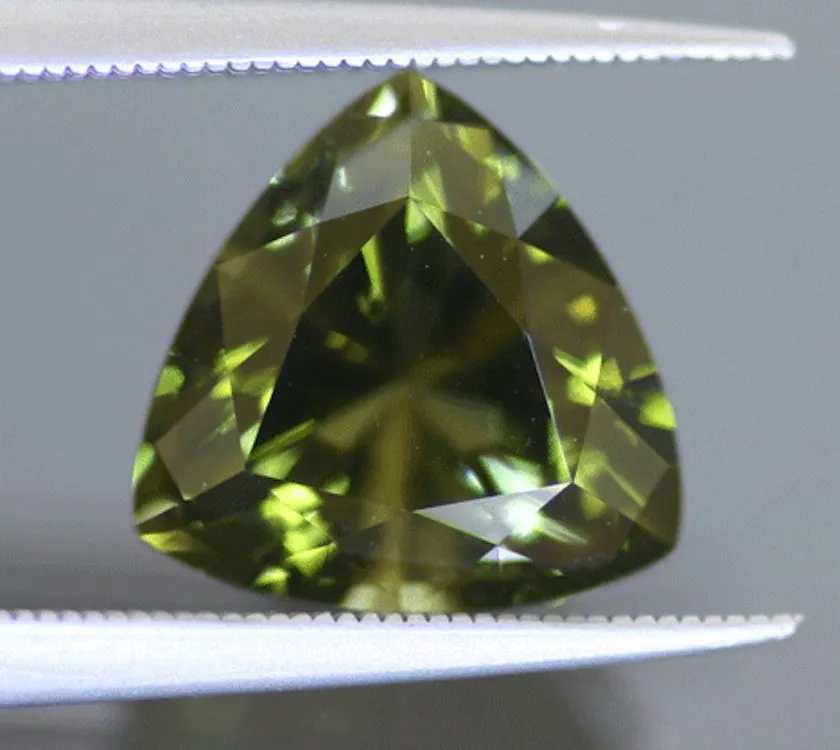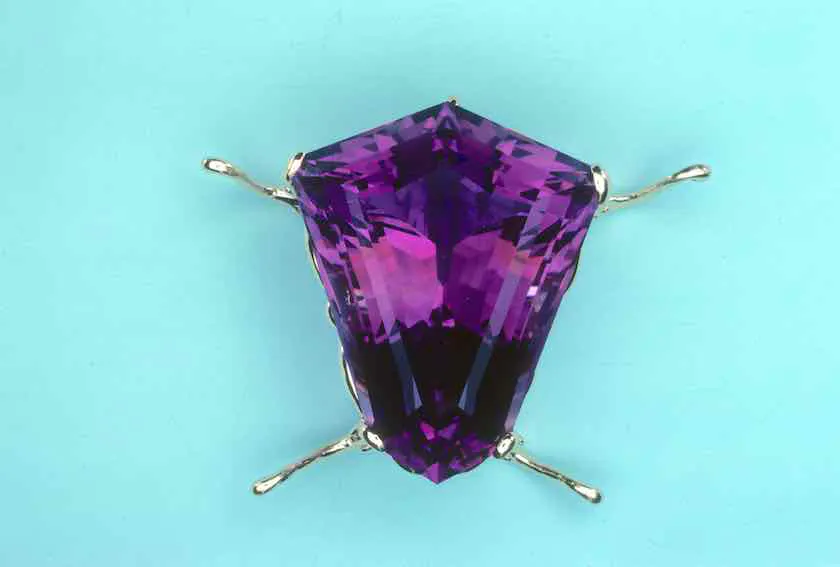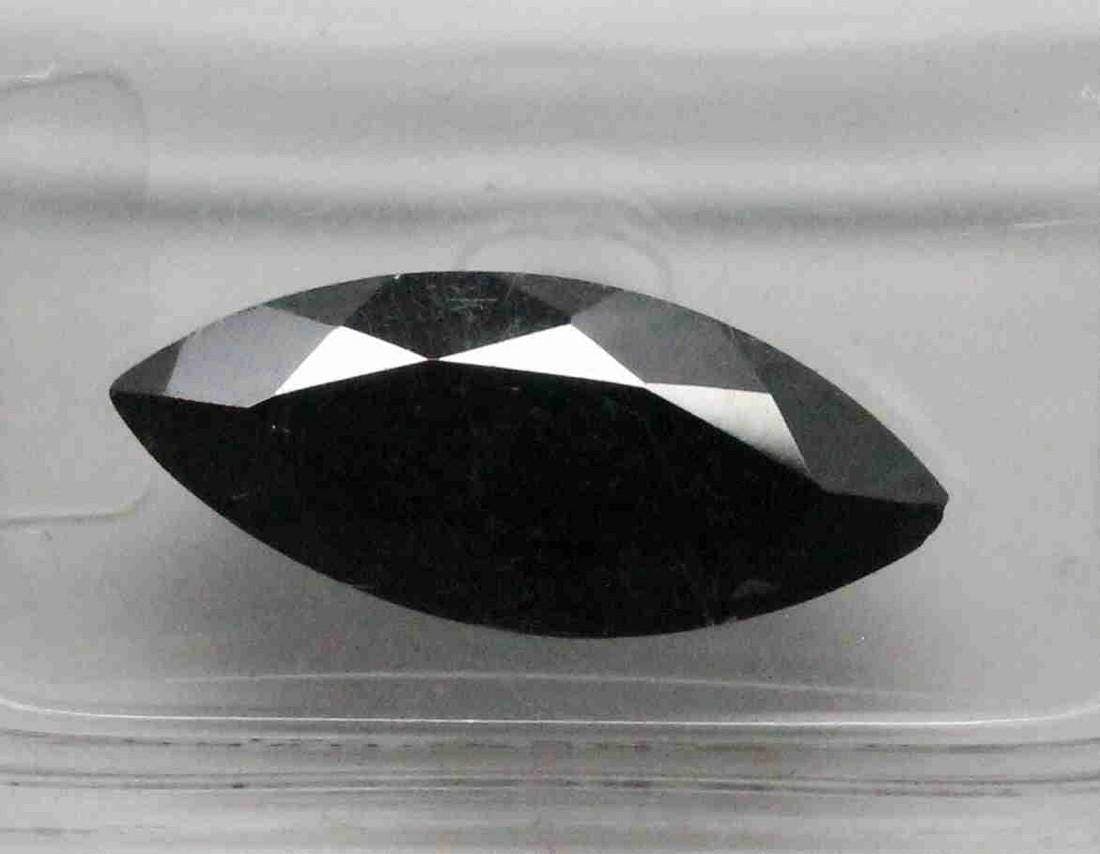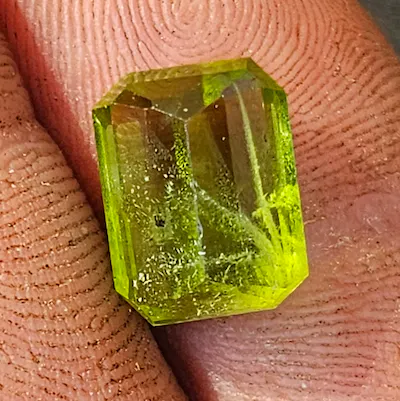Information about Gemstone Necklaces, Information about Ruby, News
How Much Does a Pearl Necklace Cost?
Discover the timeless allure of a graceful and classic pearl necklace, a captivating gem within the realm of jewelry. This article takes an in-depth glance at the pricing intricacies associated with these exquisite accessories. Embarking on a journey into the captivating world of pearls unveils a realm where beauty, craftsmanship, and financial considerations intertwine harmoniously. Explore this enchanting voyage further with insights from our Melogems brand, where the artistry of pearls is celebrated in all its splendor.
The cost of a pearl necklace differs with the type and size of pearls, their quality, shine, shape, color and design detail. Akoya pearls are famous for their roundness and shine, making them popular. Freshwater pearls come in many shapes and colors and are cheaper. South Sea pearls from Australia are large and luxurious, but more pricey because they are rare.
Also, the grading of the pearls and the stringing affect the cost. Pearls are graded on surface quality, nacre thickness, shape, and color. Better grade pearls have better quality and are more expensive. Hand-knotted strands are more expensive too, as they are more secure.
It’s best to visit a jeweler or an online pearl retailer for an individual price. They can provide options according to your budget.
Forbes Magazine’s “World’s Billionaires” has seen wealthy individuals give luxurious pearl necklaces as gifts. Prince Dimitri of Yugoslavia gave his wife Princess Lavinia Nielsen-Salomon von Frieda-Madsen a multi-strand natural pearl necklace. It showcased the couple’s love, as well as the extravagance of owning a pearl necklace.
Factors Affecting the Cost of Pearl Necklaces
A pearl necklace’s price is influenced by several factors. These factors include the quality and size of the pearls, the type of pearls used (such as freshwater pearls, Akoya pearls, or South Sea pearls), the length and design of the necklace, the metal used for the clasp, and the brand or designer reputation. Each of these elements contributes to the overall value and cost of a pearl necklace.
| Factors | Description |
|---|---|
| Pearl Quality | The quality of pearls, determined by their luster, shape, surface, and color |
| Pearl Size | The size of the pearls, measured in millimeters |
| Pearl Type | The type of pearls used, such as freshwater, Akoya, or South Sea pearls |
| Necklace Design | The design and complexity of the necklace, including length and arrangement |
| Clasp Material | The metal used for the necklace’s clasp, such as gold, silver, or platinum |
| Brand/Designer | The reputation and prestige associated with the brand or designer |
In addition to these factors, the rarity and scarcity of certain types of pearls also contribute to their higher cost. For example, South Sea pearls, known for their large size and exceptional quality, are considered more valuable and therefore more expensive.
Pro Tip: When purchasing a pearl necklace, consider investing in quality pearls, as they tend to retain value over time. Additionally, it’s important to choose a reputable brand or designer known for their craftsmanship and expertise in working with pearls.
A pearl necklace is like a relationship – the quality determines whether it’s worth the price or if you’re just getting strung along.
Learn more about the price per carat of cobalt blue spinel at Melogems!
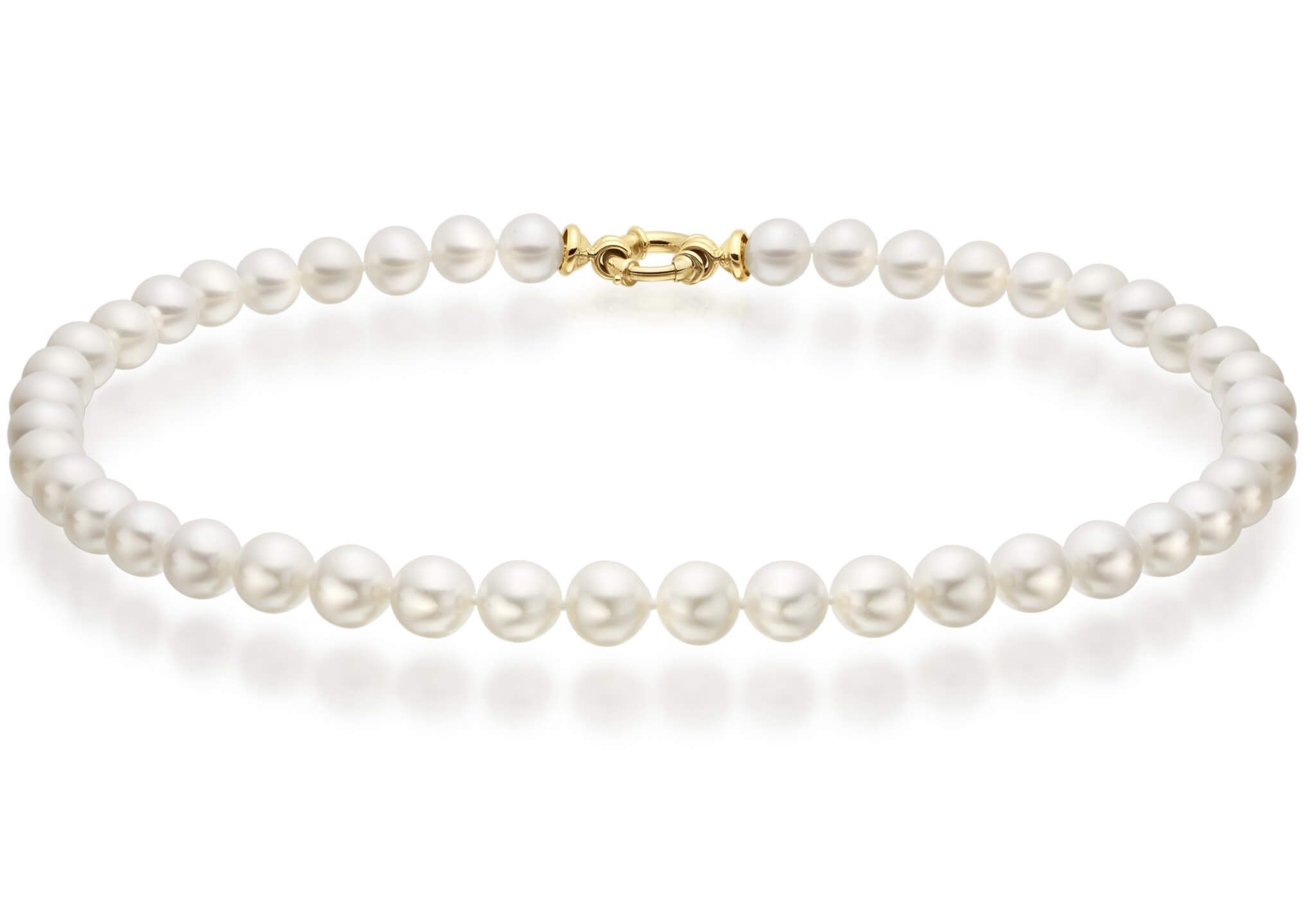
Quality of Pearls
Quality is a key point when it comes to the cost of pearl necklaces. This quality is based on size, shape, color, luster, surface cleanliness and matching. All of these things will affect the overall value and pricing of pearl jewelry. Here’s a table that shows the quality of pearls:
| Aspect | Description |
|---|---|
| Size | Ranging from small to large. |
| Shape | Round, drop-shaped, baroque, or button-shaped. |
| Color | White, cream, pink, silver-gray, black, golden, lavender. |
| Luster | Mirror-like reflection with good depth and brilliance. |
| Surface Cleanliness | Any blemishes or imperfections. |
| Matching | Size, shape, color, luster, and surface cleanliness. |
Other factors that add to the quality are nacre thickness, origin, and rarity. These enhance desirability and, therefore, the cost of pearl necklaces. An example of this is an auction house auctioning a strand of South Sea pearls which were perfectly round, had great luster, flawless surface cleanliness, and a golden hue. The price went up a lot due to the high quality, showing just how much quality affects price.
Types of Pearls
Pearls come in different types. Each has its own characteristics that affect the cost of pearl necklaces. Akoya, Freshwater, South Sea, and Tahitian pearls are some examples.
Other factors influence price too. These include size, shape, surface quality, and pearl treatment. Bigger pearls are more expensive than smaller ones. Round pearls cost more than irregularly shaped ones. Blemish-free pearls with good surface quality are pricier.
Treated pearls may look better, but they are usually cheaper than natural ones. Akoya pearls are highly valued, for their classic white color and high luster.
Size and Shape of Pearls
Size and form hold a key role in picking the price of pearl necklaces. Each pearl’s uniqueness adds to its appeal and worth. Let’s go further into the elements attached to this area.
To realize how size and shape influence the cost of pearl necklaces, let’s inspect some real data with a table:
| Pearl Size | Pearl Shape | Average Cost |
|---|---|---|
| 6mm | Round | $100 |
| 8mm | Round | $200 |
| 10mm | Round | $400 |
| 8mm | Baroque | $150 |
| 9mm | Baroque | $250 |
| 11mm | Baroque | $500 |
As seen in the table, bigger pearls usually go for more cash. For instance, a round pearl necklace with 10mm size is worth approximately $400, while an 8mm round pearl necklace costs around $200. Moreover, the shape of pearls also affects their value. Perfectly round pearls are thought to be uncommon and sell for more compared to baroque or irregular-shaped pearls.
Tip: When selecting a pearl necklace, think about both size and shape to make sure you find a piece that fits your needs and budget perfectly.
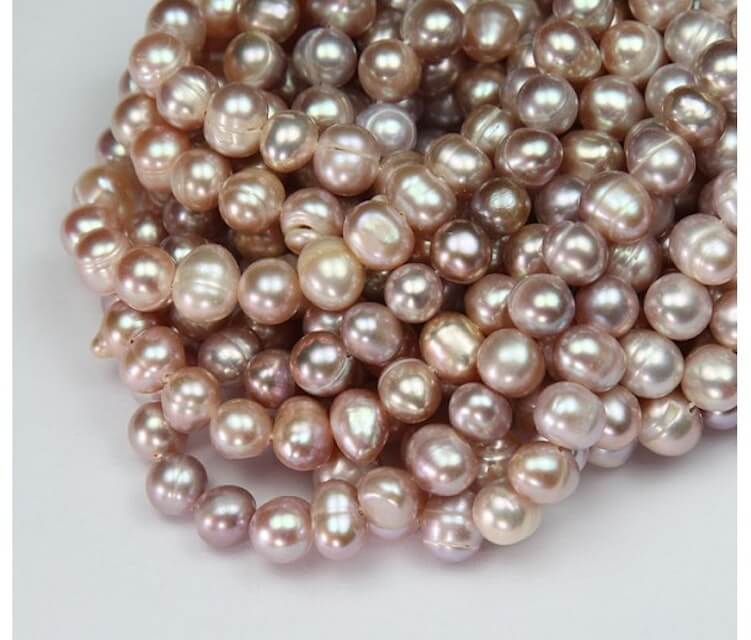
Length and Design of the Necklace
Pearl necklaces vary in length and design, which significantly affects their cost. Let’s take a look at how these factors influence the price of a necklace.
Length has an impact on cost. Shorter necklaces are usually cheaper as they require fewer pearls. Longer ones, however, cost more due to needing more pearls. The design also matters – unique designs with complex details need skilled workmanship, which raises the value of the necklace.
The choice of clasp influences cost, too. Clasps made with gold or platinum are costlier than standard ones. Additionally, the pattern and space between pearls can change the value – necklaces with uniform pearl sizes and even spacing look more symmetrical and thus cost more.
Pendant additions and gemstones have an effect on cost, too. Adding diamonds or colored gems requires extra materials and work, which add to the price.
In conclusion, when purchasing a pearl necklace, both its length and design are important factors to consider. Aspects such as length, design, high-quality clasps, even pearl arrangements, and gemstone accents all contribute to the final cost.
Don’t miss out on owning the perfect pearl necklace that fits your style and budget. Check out reliable jewelry stores or get help from knowledgeable experts to find the right necklace for you. Don’t let this chance go!
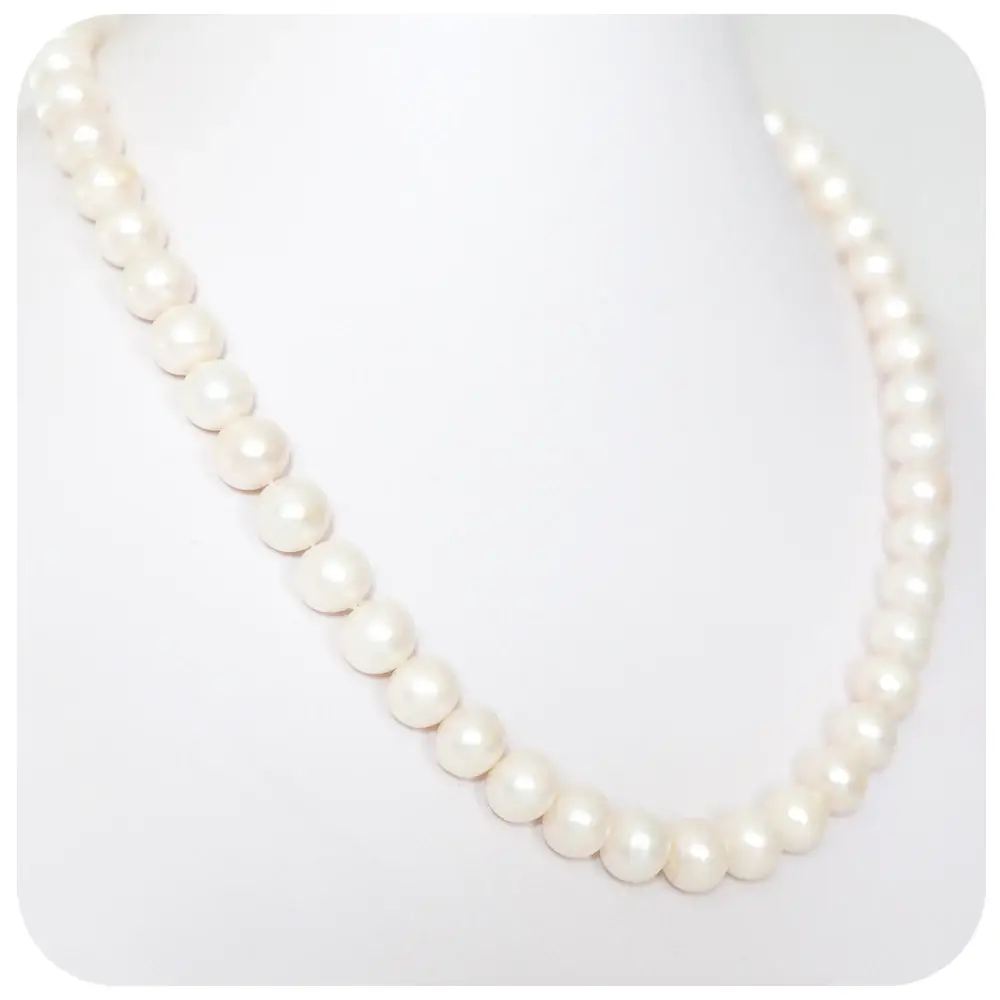
Type of Clasp
To gain a thorough understanding, let’s look at the various types of clasps used in pearl necklaces.
Spring Rings are basic and easy to use.
Lobster Claws are secure and durable.
Fishhooks are delicate and elegant.
Toggle Clasps are stylish and versatile.
Magnetic Clasps are convenient but less secure.
Custom-designed clasps can be tailored with intricate designs or precious metals, like gold or platinum.
For extra security, safety mechanisms like a safety catch or box clasp can be added.
To make the necklace look even more appealing, pick a clasp that fits the overall design and style. This way, the necklace will be both stylish and secure – a great investment for years to come.

Comparing Different Types of Pearl Necklaces
Comparing Different Types of Pearl Necklaces can be an informative way to determine the varying costs and characteristics of each type. By analyzing the different types, such as Akoya, freshwater, and Tahitian pearls, one can make an informed decision based on factors like size, luster, color, and price. Here is a comprehensive comparison of these pearl necklaces:
| Type | Size (mm) | Luster | Color | Price Range |
| Akoya | 6-8 | High | White, Cream | $200-$1000 |
| Freshwater | 6-12 | Medium | Various | $50-$500 |
| Tahitian | 8-16 | High | Black, Gray, Silver | $500-$5000 |
Each type of pearl necklace has its own unique details to consider. For example, Akoya pearls are known for their classic white and cream colors, while freshwater pearls offer a wider variety of colors. Meanwhile, Tahitian pearls are prized for their stunning black, gray, and silver hues. These differences in color and size contribute to the variation in pricing.
If you are looking to purchase a pearl necklace, there are a few suggestions that can help you make the best choice. Firstly, consider your budget and the type of necklace that aligns with it. While Akoya pearls may be more expensive, they offer a timeless elegance. On the other hand, freshwater pearls provide affordability without compromising beauty. Secondly, pay attention to factors like size and color to ensure the necklace complements your style and preference. Lastly, consider purchasing from reputable sources to guarantee the authenticity and quality of the pearls.
By understanding the comparisons between different types of pearl necklaces and considering these suggestions, you can confidently choose a necklace that suits your taste and budget.
Freshwater pearl necklaces: the budget-friendly option for those who want to look classy without having to sell their firstborn child.
Explore the price of a 1-carat ruby right at Melogems!
Freshwater Pearl Necklaces
Freshwater pearl necklaces are exquisite in beauty! Formed in the depths of freshwater, each pearl has its own natural radiance. Colors vary from white to pink, lavender, or darker shades. These necklaces are an affordable option compared to other types of pearl jewelry. They can be worn with casual or formal attire, upgrading any look. Plus, they have a long history of being adored by royalty and nobility. Each pendant is unique – telling its own story of grace and poise.
Description and Characteristics
Pearl necklaces are full of unique features. Let’s discover the world of pearls and their distinct characteristics!
In the table below, we can take a closer look at a few key traits:
| Type of Pearl Necklace | Size Range (mm) | Luster | Color Range | Surface Quality |
|---|---|---|---|---|
| Akoya | 6-9 | High | White, Cream, Pink, Silver-Grey, Blue-Green | Virtually Blemish-Free |
| South Sea | 8-18 | Soft to Satin-like | White, Cream, Golden | Lightly to Moderately Blemished |
| Tahitian | 8-16 | Medium to High | Dark Grey to Black | Lightly to Moderately Blemished |
| Freshwater | 5-10 | Soft | White, Lavender-Pink, Peach | Various Degree of Blemishes |
It’s worth noting that Akoya pearl necklaces often have a high luster and perfect surface quality due to their careful culturing.
My friend recently looked stunning wearing a South Sea pearl necklace. Its golden hue matched her outfit perfectly, adding an amazing radiance.
Pearl necklaces give a sophisticated look. By understanding the different types, people can pick the ideal piece for any special occasion.
Price Range
Different types of pearl necklaces can vary in price a lot. Let’s take a look at the prices and what they mean. Here’s a table that shows the different price ranges for pearl necklaces:
| Type | Price Range |
| Freshwater Pearls | $50 – $500 |
| Akoya Pearls | $300 – $3,000 |
| Tahitian Pearls | $1,000 – $10,000 |
| South Sea Pearls | $5,000+ |
Freshwater pearls are more common and cheaper. Akoya pearls are pricier because of their luster. Tahitian pearls are more expensive because of their unique colors and size. South Sea pearls are priciest because of their rarity.
Let’s look at a story related to these gems. A collector found a strand of Akoya pearls in an antique store. It was said to have belonged to a famous actress from the golden era of Hollywood. The collector bought it and put it in his collection. This necklace had both monetary and sentimental value, making it more than just a piece of jewelry.
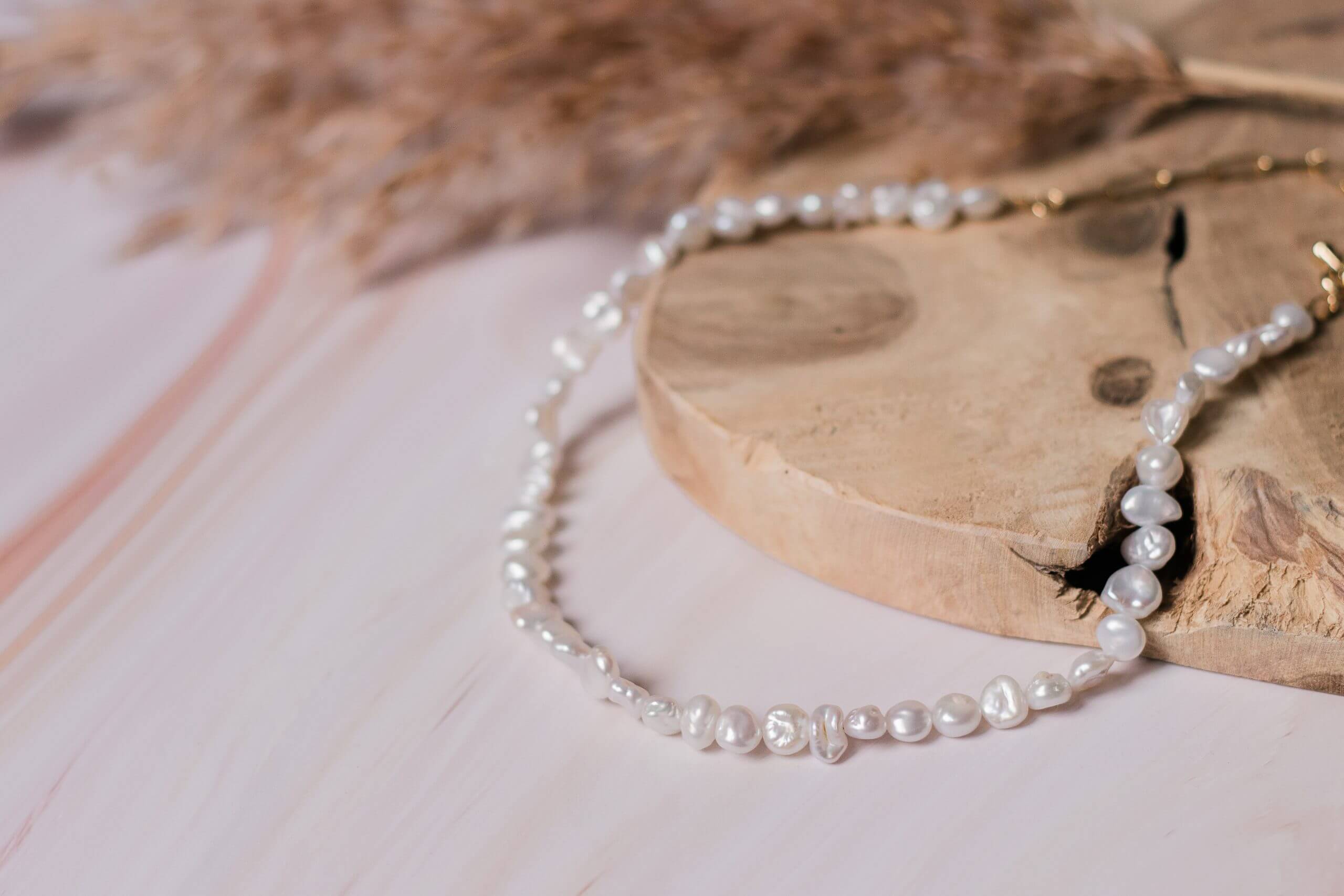
Akoya Pearl Necklaces
The beauty of Akoya Pearl Necklaces is in their precision and craftsmanship. Every necklace is carefully designed with detail in mind – size, shape, colour and luster all perfectly matched. The result? A timeless beauty that captures luxury.
Let’s explore these exquisite pieces.
Pearls: high-quality Akoya cultured pearls.
Size: 6-8mm diameter.
Shape: mostly round, sometimes semi-round.
Colour: white or cream, with hints of pink or silver.
Luster: highly reflective and glossy.
Clasp: sterling silver or gold.
These necklaces have a special charm because of the specific characteristics of Akoya pearls. Round shape and high luster make them particularly radiant – this is what jewelry enthusiasts around the world love.
History of Akoya Pearl Necklaces goes back to Japan in the early 1900s. Kokichi Mikimoto, a Japanese entrepreneur, was the first to successfully cultivate spherical pearls using nacre-coated beads as nuclei. This breakthrough made mass production of Akoya cultured pearls possible – and so popular.
In conclusion, Akoya Pearl Necklaces embody elegance and sophistication. Their crafting and aesthetics are a reminder of the beauty of Akoya pearls. With a history of over a century, these necklaces remain symbols of luxury and refinement.
Description and Characteristics
Pearl necklaces come in various types. Each has its own unique description and characteristics. Knowing these differences can help you pick the right necklace for your style and preferences. Let’s explore the types of pearl necklaces and their features.
Check out this table for descriptions and characteristics of different types of pearl necklaces:
| Type | Description | Characteristics |
|---|---|---|
| Freshwater pearls | Cultured in freshwater lakes and rivers | Affordable, diverse shapes & sizes, white to pink or lavender |
| Akoya pearls | Cultured in saltwater | Classic choice, high luster, usually white or cream-colored |
| Tahitian pearls | Cultured in French Polynesia | Unique dark colors ranging from black to gray to green |
| South Sea pearls | Cultured in Australia, Indonesia, or Myanmar | Largest saltwater pearl variety, creamy golden color with subtle overtones |
| Baroque pearls | Irregularly shaped | Unique and artistic appearance |
Here are some extra details for each type of pearl necklace:
- Freshwater pearls: Not as high luster as others, but they make up for it with affordability and range of shapes & sizes.
- Akoya pearls: Classic choice with high luster, usually white or cream-colored.
- Tahitian pearls: Unique dark colors, from black to gray to green.
- South Sea pearls: Large size, creamy golden color with subtle overtones. Exude elegance and luxury.
- Baroque pearls: Irregular shapes, for a unique and artistic twist.
To pick the perfect pearl necklace for yourself or as a gift, consider the following:
- Your personal style: Pick a necklace that aligns with your style and complements your wardrobe.
- Occasion: Different types of necklaces are suitable for different events.
- Color preferences: Each type comes in different colors. Consider the recipient’s favorite colors or those that match their skin tone.
By following these tips, you can choose a pearl necklace that reflects your style and showcases the beauty of these gems.
Price Range
When considering the price of pearl necklaces, it’s important to remember that prices vary greatly. Let’s take a look at the table below:
| Type of Pearl | Price Range (USD) |
|---|---|
| Freshwater | $50 – $500 |
| Akoya | $200 – $2,000 |
| Tahitian | $500 – $10,000 |
| South Sea | $1,000 – $100,000 |
Freshwater pearls are usually more affordable, with prices ranging from $50-$500. Akoya pearls are mid-range, costing from $200-$2,000. Tahitian pearls are pricier, with prices of $500-$10,000. South Sea pearls are the most expensive, with a range of $1,000-$100,000.
When choosing a pearl necklace, it’s important to decide which qualities are most important, and then allocate the budget accordingly. For example, for a budget-friendly option, freshwater pearls may be suitable. For a luxurious experience, choose Tahitian or South Sea pearls. It’s wise to evaluate each necklace before buying, as prices don’t always correspond with quality.
By understanding the various price ranges and considering personal preferences, shoppers can confidently find the perfect pearl necklace to match their style and budget.
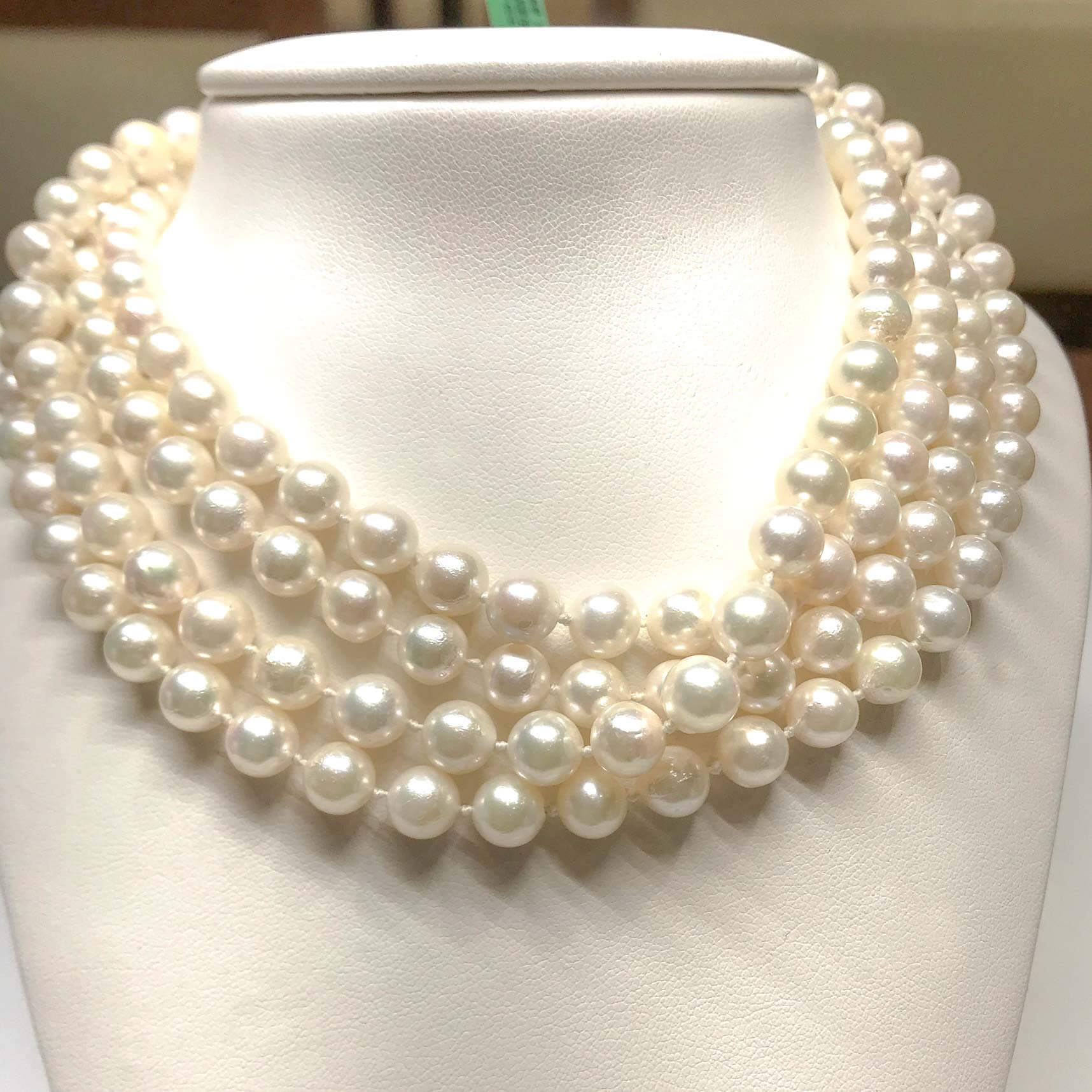
South Sea Pearl Necklaces
Take a closer look! Explore the different types of South Sea pearl necklaces. White, golden, and silvery – each type has its own unique charm. Not only are they beautiful, but these pearls are also renowned for their large size, smooth surface, and radiant luster. Collectors and connoisseurs alike appreciate their rarity.
These necklaces are perfect for making a statement or commemorating a special occasion. So why wait? Discover the splendor today! Embrace timeless beauty and the essence of sophistication. Luxury awaits – don’t let this opportunity slip away!
Description and Characteristics
Pearl necklaces come in many varieties. Let’s discover what makes them special! Here’s a table showing the distinct features of each type:
| Type | Description | Characteristics |
|---|---|---|
| Akoya | Classic luster and round shape | Usually white/cream. High brilliance. |
| Freshwater | Wide range of colors | Irregular shape, soft sheen. White, pink, lavender, peach. |
| South Sea | Large size and luxurious | White, silver, gold, black. Incredible size, quality. |
| Tahitian | Exotic colors and rich tones | Black, gray, blue, green, purple. Iridescence. |
Apart from these, there are other unique variants – baroque, coin, and keshi pearls. Did you know Akoya pearls originate from Japan? Cultivated by Kokichi Mikimoto in the late 19th century, they’ve become highly sought after for their elegance and quality.
Price Range
When it comes to pearl necklaces, their cost is determined by various factors. These include the type of pearl, size, quality, and design materials.
Let’s look at the table below to get an idea of the price range for each type of pearl necklace:
| Pearl Type | Price Range ($) |
|---|---|
| Freshwater | $100 – $1,000 |
| Akoya | $300 – $10,000 |
| Tahitian | $500 – $20,000 |
| South Sea | $1,000 – $100,000 |
Freshwater pearls are usually more affordable than others. South Sea pearls, however, are known for being of higher quality and luxury, as seen in their higher price range.
Keep in mind that these prices may vary depending on the brand and jewelry craftsmanship.
Throughout history, pearls have been highly valued. They were symbols of wealth and prestige among royal families and aristocrats. Over the centuries, the demand for pearls has remained strong, leading to different cultures developing their own techniques for cultivating these gems.
When choosing a pearl necklace, remember to consider your budget and preferences. Whether you opt for freshwater or a luxurious South Sea pearl necklace, each piece carries its own unique beauty and charm.

Factors to Consider When Buying a Pearl Necklace
Factors to Keep in Mind When Purchasing a Pearl Necklace:
- Natural or Cultured Pearls: Decide whether you want to buy a necklace made of natural pearls, which are rare and expensive, or cultured pearls that are more affordable but still offer a lustrous appeal.
- Pearl Size: Consider the size of the pearls, as it can affect the overall cost. Larger pearls generally come with a higher price tag due to their rarity.
- Pearl Quality: Evaluate factors such as shape, color, luster, and surface quality when selecting a pearl necklace. These characteristics significantly impact the price and overall aesthetic appeal.
- Necklace Design: Choose a necklace design that suits your personal style and preferences. Different types of necklaces, such as single-strand, multi-strand, or pendant necklaces, can vary in price and visual appeal.
In addition to these factors, it’s essential to consider the authenticity and reputation of the seller, as well as the necklace’s overall durability and maintenance requirements. By carefully considering these factors, you can make a well-informed decision and find a pearl necklace that meets both your aesthetic and budgetary requirements.
To enhance your shopping experience, here are some suggestions:
- Buy from a reputable jeweler or online store that specializes in pearls to ensure you are getting a genuine and high-quality necklace.
- Consider purchasing a necklace with smaller pearls if you are on a tight budget, as they can still offer an elegant and sophisticated look.
- Opt for a classic and timeless design that can be worn for various occasions, ensuring longevity and versatility.
- Take proper care of your pearl necklace by avoiding exposure to chemicals, perfumes, or excessive heat, as this can damage the pearls and affect their luster over time.
By following these suggestions, you can find the perfect pearl necklace without compromising on quality or breaking your budget.
Looking for something cheaper than a diamond necklace? Get a pearl one and pray your spouse doesn’t notice the difference.

Budget
Price is an important factor when buying a pearl necklace. Knowing the varieties of price ranges can help you make an informed decision. Here’s what to expect:
Under $100: You can find freshwater pearl necklaces with smaller pearls & standard clasps. Quality may vary, but they look great!
$100 – $500: At this price, explore different colors & shapes of Akoya & Tahitian pearls. Plus, the size & luster improve.
$500 – $1,000: High-quality Akoya or Tahitian pearl necklaces with large pearls & minimal imperfections.
$1,000 – $5,000: Get luxurious South Sea pearls with great size & radiance.
Above $5,000: The rarest & most valuable varieties like natural saltwater pearls or rare color variations.
Considering your budget & the timeless allure of pearls will help you find the perfect one! From ancient Egypt to Renaissance Europe, they have been symbols of wealth & sophistication. So, as you search, appreciate the unique aspects of each price range.
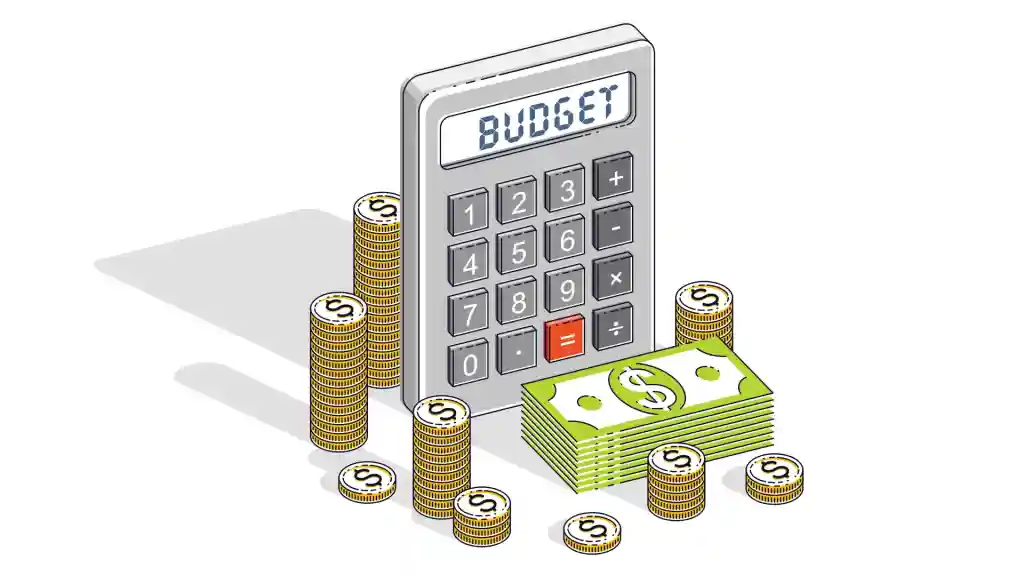
Occasion and Style
For finding the perfect pearl necklace, consider occasion and style. Formal events call for classic white or black cultured pearls, single or multiple strands. Weddings need delicate pendants or chokers with smaller pearls. Go for freshwater pearls in vibrant colors for casual gatherings. Office attire requires single strand whites or modern designs. Special dates need a longer strand that wraps twice. In addition, examine size, shape, luster, and length. Get your jewelry collection complete with a pearl necklace! Make your purchase and embrace elegance and sophistication. Step into every occasion with confidence!
Authenticity and Certification
When buying a pearl necklace, authenticity and certification are key. This makes sure the pearls are genuine and of high quality.
Let’s look at some points that will help you understand:
- Pearl Origin: Freshwater, saltwater, and cultured varieties all have different values.
- Size and Shape: Pearls come in round, oval, or baroque shapes; each with its own charm.
- Luster: This is the sheen or glow of the pearl’s surface. High-quality pearls have a reflective, radiant luster.
- Surface Quality: Check for any blemishes or imperfections. Minimal flaws make the pearl more beautiful.
- Color: From white to black, there are many colors to choose from. It depends on your personal taste.
Also, consider other aspects to assess the pearl’s authenticity and certification.
Remember: when buying a valuable item like this, get proper certification to guarantee its quality.
Conclusion
The cost of a pearl necklace can vary a lot. But beauty and elegance? That can’t be priced.
When considering the cost, pay attention to the quality of pearls used. Perfectly round, lustrous, and blemish-free pearls cost more. The size of the pearls matters, too.
Akoya pearls are classic white with brilliant luster. They’re pricier than freshwater pearls. South Sea and Tahitian pearls are even more valuable due to their large size and unique colors.
The length and design of the necklace can also affect the cost. Long necklaces or those with intricate designs are more expensive.
For the best value, buy from reputable jewelers or pearl experts. They can guide you on selecting high-quality pearls within your budget.
Frequently Asked Questions
FAQ: How Much Does a Pearl Necklace Cost?
Q1: What factors determine the cost of a pearl necklace?
A1: The cost of a pearl necklace is determined by factors such as the quality and size of the pearls, the type of pearl (freshwater, Akoya, Tahitian, or South Sea), the length and style of the necklace, and the overall craftsmanship.
Q2: What is the average cost of a freshwater pearl necklace?
A2: The average cost of a freshwater pearl necklace ranges from $50 to $500, depending on the factors mentioned earlier. Lower-grade freshwater pearl necklaces tend to be more affordable, while higher-grade ones with larger pearls can cost several hundred dollars.
Q3: How much does an Akoya pearl necklace typically cost?
A3: Akoya pearl necklaces are known for their high luster and uniform roundness, which makes them more expensive than freshwater pearls. On average, an Akoya pearl necklace can cost anywhere from $300 to $10,000, depending on the quality and size of the pearls.
Q4: What is the price range for a Tahitian pearl necklace?
A4: Tahitian pearl necklaces are prized for their unique dark colors and large sizes. The price range for a Tahitian pearl necklace starts at around $500 and can go up to several thousand dollars, depending on factors such as size, color, luster, and surface quality.
Q5: How much does a South Sea pearl necklace cost?
A5: South Sea pearl necklaces are considered the most luxurious and valuable due to their large size, rarity, and glowing luster. The cost of a South Sea pearl necklace typically starts at $1,000 and can exceed $100,000 for top-quality pearls.
Q6: Are there any additional costs associated with buying a pearl necklace?
A6: Besides the actual cost of the pearl necklace, there might be additional costs such as sales tax, shipping fees, and insurance if you opt for it. It’s essential to consider these factors when determining the overall cost of purchasing a pearl necklace.

